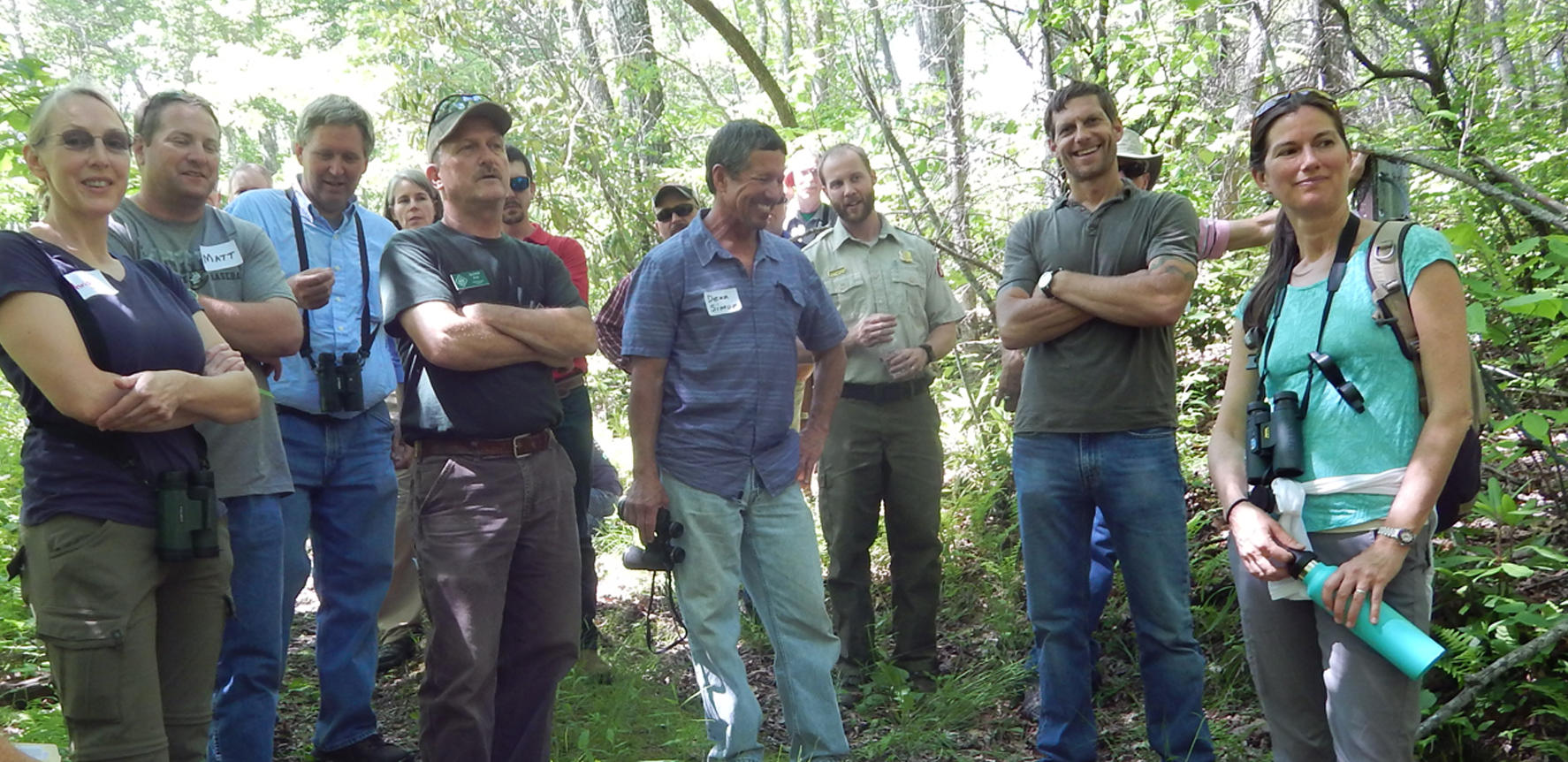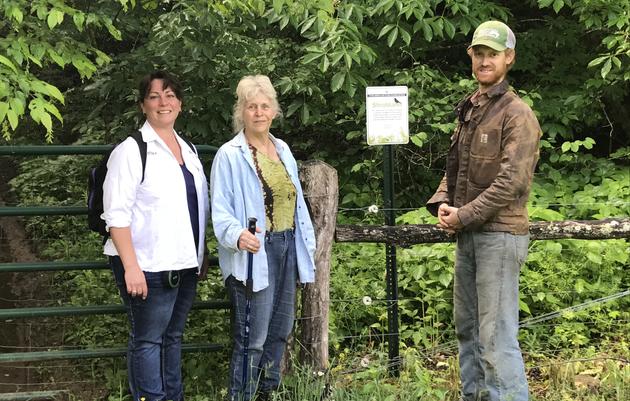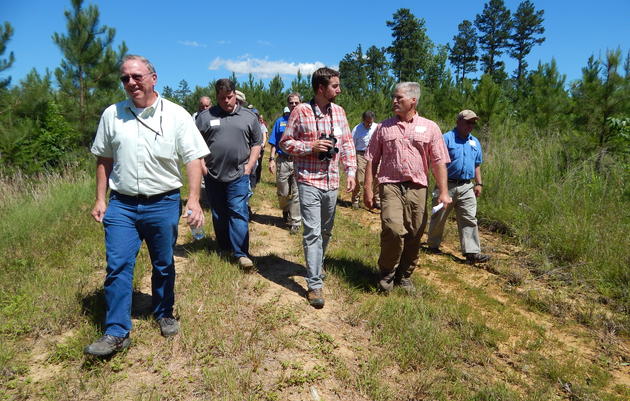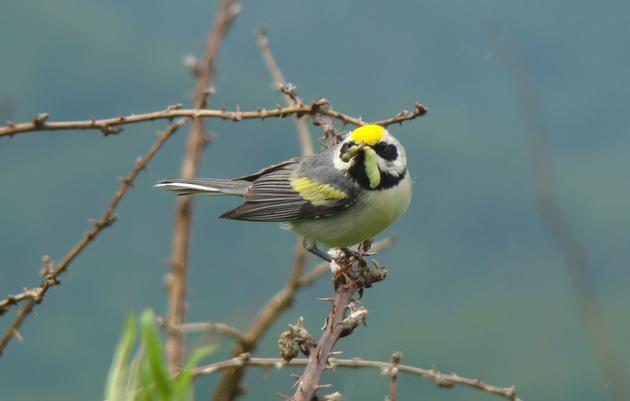Audubon NC’s second “Foresters for the Birds” training workshop was held on May 31 at the NC Forest Service Training Facility in Newland, NC.
Similar to the workshop held in our state’s Northern Piedmont Eastern Priority Forest focal area, this professional training sought to share bird-friendly forestry techniques in the mountain focal region.
Read on for an overview of our latest workshop! For more information about this and other Working Lands programs, contact Aimee Tomcho at atomcho@audubon.org.
From foresters to fish and wildlife
More than forty natural resources professionals attended, representing nearly thirty different entities. The majority were state and consulting foresters, while organizations like the National Wild Turkey Federation, US Fish and Wildlife Service, and Soil and Water Conservation Districts were also represented.
Speakers from ANC, NCFS, and NC State University presented research and methods in priority forest mapping, the history of the forests in the Southern Appalachians, and avian ecology research. Many productive conversations were initiated to further connect the mutual goal of forest health.
Tools to help landowners achieve conservation goals
The details of Forest Landbird Legacy Program, a cost-share opportunity for private landowners, were shared as a tool to effectively and economically help landowners achieve conservation priorities with sound technical recommendations that couple with financial assistance.
Landowners within four NC focal areas who own 50 acres or more with stands of trees at least 50 years old qualify for this program. Because it is often professional foresters who write the forest management plans for these landowners, it is important to engage this group with a myriad of options to aid in meeting the goals families have for their land, which are more frequently including goals specific to bird diversity and abundance.
Foresters take to the woods!
The workshop concluded with a tour of Gill State Forest, where more than 25 plots experiment with various forms of forest management. Previous visits to the site revealed more than 50 species of birds detected thanks in part to treatments that mimicked historical disturbances to maintain a diverse vertical and horizontal vegetative structure within the stand of trees.
This structure gives options to birds like the Hooded Warbler, who prefer substantial mid- and understory layers of the forest, as well as birds like the Scarlet Tanager, who prefer a large percentage of tree canopy in the overstory of forested stands.
Learning to see the forest for the trees
Monty Wooten, Registered Forester with Greenleaf Forest Management, started to look at grapevine in a different way. Whereas from a forester’s perspective he sees grapevine as harmful to tree productivity, he could see its value in producing complex forest structure and as an important source of soft mast on which wildlife can forage.
As we stood and looked at a huge, old maple, Michael Lewis of W. Michael Lewis & Associates pointed out how landowners can often be particularly fond of certain trees not only for their age, but for the unique characteristics that develop with time (such as natural cavities or broken limbs). Luckily, these “anomalies” are actually an important part of habitat preference in birds and serve as incredible food and cover resources for birds.
Positive feedback received after the workshop made it clear the day was a success for all involved!
"Many thanks! Your class was excellent. You spoke the language of forestry, stand structure, silvics, and silviculture. You made it applicable - and that is meant as a high compliment."
Who supports ANC’s forestry programs?
Audubon NC is grateful to our program partners: US Fish and Wildlife Service, North Carolina Forest Service, NC Wildlife Resources Commission, Natural Resources Conservation Services, and sponsorship from: Partners for Fish and Wildlife, NC Forest Stewardship Program, Clean Water Management Trust Fund, and the National Fish and Wildlife Foundation.
We are thankful for the day’s presenters who shared their knowledge and opened critical pathways to dialogue: Curtis Smalling, Justin Query (NCFS Assistant District Forester), and Dr. Chris Moorman (NC State University).
For more information about this and other Working Lands programs, contact Aimee Tomcho at atomcho@audubon.org.









